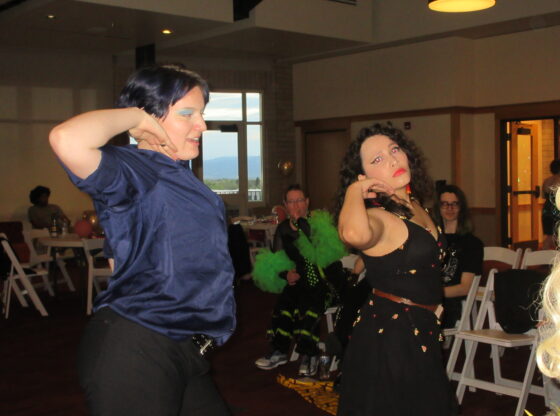The 1960s was a time fueled by what some may call an artistic reformation; from the Beatles all the way to “Lawrence of Arabia,” the classic form of the entertainment landscape was starting to change. Similar to change in entertainment in the ‘60s, one can look at this year’s Academy Award nominated movie “The Shape of Water” and bask in the genre-changing film that brings new light to storytelling, filmmaking and creativity.
“The Shape Of Water” follows Eliza Esposito (Sally Hawkins, “Blue Jasmine” ), a mute and saddened woman who works as the help with many others in a top secret government laboratory in Baltimore, Md. in 1962. Eliza lives above a movie theatre, and she is lackadaisical in her almost everyday routine. Until one day, she meets the amphibian man (Doug Jones, “Hellboy”) while at work, and they soon become entwined in each other’s presence. Though when things get out of hand at the government facility and the creature escapes due to Eliza and her friends’ plans, it’s up to Strickland (Michael Shannon, “Midnight Special”), a government security agent hotshot with a gun and a furious temper to get things “under control.”
At first glance one might overly simplify “The Shape Of Water” to be an exact clone of Disney’s “Beauty and the Beast,” just with a different setting. Make no mistake, this is a complete falsity. “The Shape Of Water” is not just a romantic movie that will make and break hearts but rather a fascinating journey that takes everything to love about every genre like science fiction, horror, romance, action, mystery, crime and a little comedy to revolutionize filmmaking. It bends the best characteristics of film genre, which at times made me jump, laugh, cringe and even blush. The film handles so many different social and cultural issues, like racism, sexual harassment, homophobia and yes, even the argument of what should be classified as the best pie. I couldn’t help but really relate to the characters as one does, longing for someone special to come along and drastically change the fabric of one’s essential desire of love.
Guillermo Del Toro, the director for “The Shape of Water,” brings a certain type of craft to this film that renders it to be a true visual mastery. The film should also not just be applauded for its visual tone, but its inherently distinctive soundtrack: it feels like you’re listening to a real live jazz and blues concert at times, which adds an entire meaning to the film. In one scene, I couldn’t help but notice how the music along with the superb set design made the film feel like you were watching something from Tim Burton; each scene is so genuine and indulging. The nostalgia of everything from The Beatles to ‘50’s horror movies, makes the film so unique, it feels just right.
Overall, “The Shape Of Water” is a call to the old, the new and to film goers everywhere. It has struck gold in such a distinct way, that it feels as if you leave the theatre with an ever present smile of joy and content, for the chance to explore, search and achieve the impossible, the unimaginable in life; it explores the theme of not beauty and the beast, but the understanding that love is attainable in any lengths, that it can transcend any medium or form including the shape of water.











